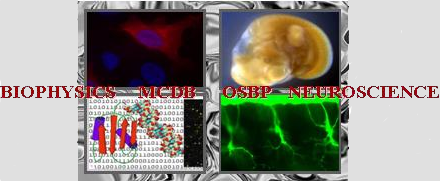Talk abstracts
Talk on Wednesday 09:15-09:30am submitted by Meretta Hanson
A simulated calcium imaging dataset and analysis pipeline for hippocampal place cells
Meretta A. Hanson (Neuroscience Graduate Program), Jason C. Wester (Department of Neuroscience)
Abstract:
Calcium imaging is a powerful technique that allows researchers to visualize neural activity in hundreds of neurons simultaneously. This technique is especially valuable for studying hippocampal place cells, which fire selectively at specific locations as an animal navigates its environment. Despite its widespread use, calcium imaging analysis currently lacks standardization across labs, with each group often developing custom processing pipelines that employ differing methods for place field identification and analysis. This creates challenges for reproducibility and cross-study comparisons.
I created an application that addresses these challenges by 1) generating realistic simulated calcium imaging datasets from hippocampal place cells during navigation and 2) creating a standardized analysis pipeline validated against ground truth data (i.e. when neurons actually fire an action potential). This simulation accurately models diverse subtypes of place cells (spatial-modulated, reward-modulated, speed-modulated, and more) with realistic calcium indicator kinetics across multiple experimental trials. Environmental changes between trials affect specific place cell subtypes differently. For example, moving reward locations primarily impacts reward-modulated place cells, while sensory context changes affect spatial-modulated cells. Users can easily customize parameters including subtype-specific cell numbers, environment dimensions, reward locations, experimental manipulations, and more.
For labs beginning calcium imaging experiments, this application provides an educational resource with known ground truth for validating analyses. For established groups, I hope it will facilitate cross-lab reproducibility via standardized place cell analysis techniques. Thus, this application not only addresses current technical challenges but also paves the way for more collaborative and reproducible research into the neural basis of spatial navigation and memory.
Keywords: calcium imaging, computational neuroscience, spatial navigation
